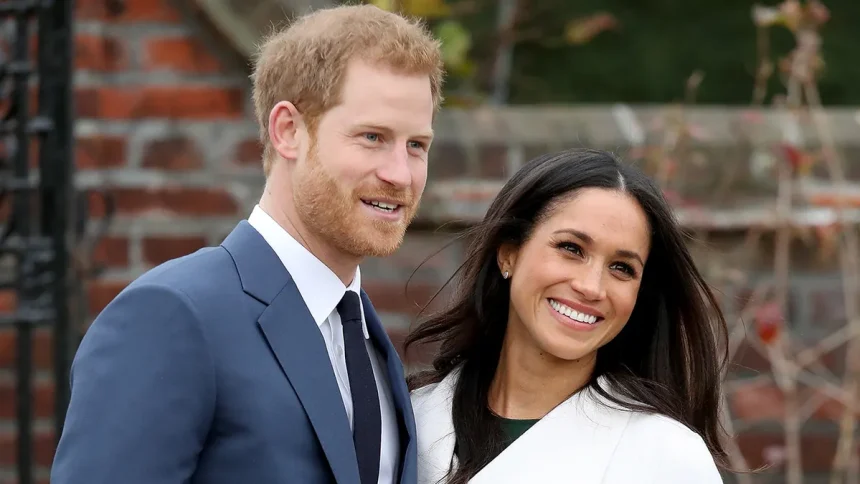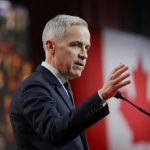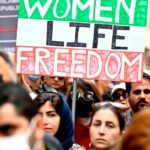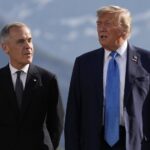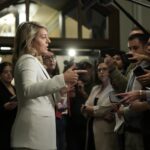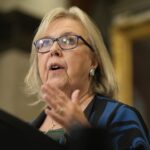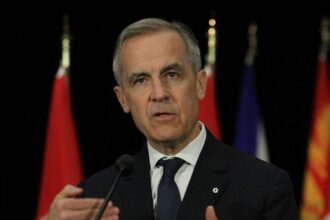(Updated Regularly) – The saga of Prince Harry and Meghan Markle has evolved from a fairy-tale romance into a global drama that captivates audiences on both sides of the Atlantic. This article brings readers the latest Harry and Meghan news, charting their journey from royal darlings to outspoken ex-royals. In a British-Canadian tabloid tone, we peel back the palace curtains on the Sussexes’ breaking headlines, relationship timeline, royal rifts, and the cultural tremors they’ve caused. (This article is regularly updated to reflect breaking news Harry and Meghan today.)
Breaking News: Harry and Meghan Today
Breaking News: Over the past five years, Harry and Meghan have continuously made headlines – from their unprecedented royal exit to media mega-deals and tell-all interviews. In January 2020, the couple stunned Britain by announcing they would “step back from senior royal roles”. Dubbed “Megxit” by the press, this move saw them relinquish their “His/Her Royal Highness” titles and seek financial independence. By March 2020, they had carried out their final royal engagement and relocated abroad, initially spending time in Canada before settling in California. The Queen herself endorsed their decision with compassion, noting “Harry, Meghan and Archie will always be much loved members of my family” – a reassuring statement that set an affectionate tone even as the Sussexes embarked on a new life.
Soon after leaving the Firm, Harry and Meghan pursued commercial ventures that kept them in the Prince Harry and Meghan news cycle. In September 2020, streaming giant Netflix announced a multi-year production deal with the Sussexes, followed by a lucrative Spotify podcast agreement later that year. The couple launched their Archewell foundation and charity initiatives, aligning their royal fame with global causes. By early 2021, they were expecting their second child and preparing to give a bombshell interview to Oprah Winfrey – a televised special that would redefine Meghan and Harry news for years to come.
Major Headline – Oprah Tell-All (March 2021): In a prime-time interview watched by millions, Harry and Meghan unloaded shocking allegations about their life inside the palace. Meghan revealed she had experienced suicidal thoughts amid relentless media attacks – “I just didn’t want to be alive any more” – and claimed the palace HR refused her pleas for help. Even more incendiary were her accusations of racism: an unnamed royal relative had speculated about “how dark [their son Archie’s] skin might be when he’s born”. Harry, sitting beside her, spoke of feeling “trapped” in royal life and “let down” by his father Charles. The interview’s breaking news Harry and Meghan revelations rocked the monarchy, forcing a rare palace response. Buckingham Palace issued a brief statement that acknowledged the gravity of the issues but pointedly noted, “some recollections may vary”. Harry’s brother Prince William defended the family publicly, telling reporters “We’re very much not a racist family”. The fallout dominated Prince Harry and Meghan latest news for weeks, spurring debates on racism and mental health in the U.K. and Commonwealth.
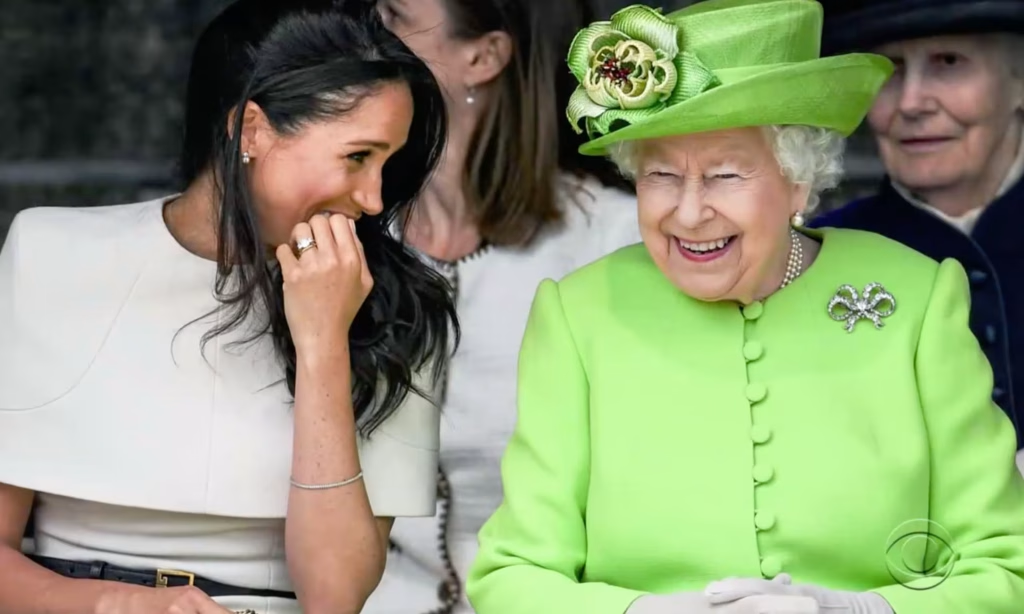
In April 2021, just weeks after the interview, Harry returned to Britain alone to attend the funeral of his grandfather, Prince Philip (Meghan, then pregnant, stayed in California on medical advice.) Observers noted a tense reunion with William at the funeral, foreshadowing ongoing family strains. In June 2021, happier news arrived: Meghan gave birth to their daughter, Lilibet Diana, named in honor of the Queen and Princess Diana. The latest Harry and Meghan news that summer also included a legal victory – Meghan won a High Court privacy case against the Mail on Sunday for publishing a private letter, prompting that tabloid to issue a front-page apology.
2022: As the Sussexes established their new life abroad, they returned to Britain sparingly. In June 2022, the couple visited London for Queen Elizabeth II’s Platinum Jubilee celebrations. Public reception was mixed – they were greeted with both cheers and some jeers – underscoring divided opinions. The pair kept a low profile during Jubilee events, avoiding overshadowing the senior royals. Tragically, just a few months later, the Queen died in September 2022, and Harry and Meghan were in the UK at the time. They joined Prince William and Princess Kate in a somber walkabout to meet mourners outside Windsor Castle, presenting a united front despite well-documented tensions. During the state funeral, Harry notably wore a morning suit (having been stripped of military patronages) yet honored his grandmother with deep emotion. King Charles III, in his first address as monarch, even extended an olive branch to the Sussexes: “I want also to express my love for Harry and Meghan as they continue to build their lives overseas,” he said, signaling that, despite the rift, they remained beloved family.
Closing out 2022, Harry and Meghan made waves once more with a self-produced Netflix docuseries, “Harry & Meghan.” Released in December, the six-part series offered an intimate look at their story and grievances. It chronicled everything from Meghan’s struggles with the royal staff to Harry’s view of a toxic media culture. In one dramatic moment, Harry recalled a January 2020 summit with the Queen and Prince William about his departure: “It was terrifying to have my brother scream and shout at me, and my father say things that just simply weren’t true, and my grandmother quietly sit there and sort of take it all in”. He lambasted the royals’ media operation as “a dirty game” of planted stories and leaks , and expressed sadness that William was now “on the institution’s side” against him. These revelations – delivered in the couple’s own words – fueled breaking news Harry and Meghan coverage globally, even as the monarchy tried to maintain a dignified silence.
2023: The new year began with an even bigger bang. In January, Prince Harry’s memoir “Spare” hit bookshelves, smashing sales records and airing more royal dirty laundry. Leaked excerpts ahead of publication revealed jaw-dropping incidents: Harry recounted a 2019 confrontation at Nottingham Cottage where William allegedly called Meghan “difficult” and then “grabbed [Harry] by the collar, ripping [his] necklace, and… knocked [him] to the floor,” leaving him visibly hurt. He also divulged deeply personal stories – from pleading with Charles not to marry Camilla, to confessing his wartime kills and past drug use. The memoir painted a picture of a royal family fraught with jealousy, emotional pain, and unresolved grief over Diana’s death. While the palace declined to comment on Spare’s claims, the Prince Harry and Meghan news cycle went into overdrive, dissecting every sensational detail. The rift between Harry and the Windsors appeared wider than ever. Shortly after Spare’s release, it emerged that King Charles had asked Harry and Meghan to vacate their remaining UK residence, Frogmore Cottage – a move seen by some as fallout from the book.
In May 2023, the world watched as King Charles III was crowned at Westminster Abbey – and Prince Harry attended, notably without Meghan. The Duke of Sussex made a brief 24-hour trip to London for his father’s coronation, sitting in the third row among lesser royals. Meghan remained in California with Archie (who coincidentally celebrated his 4th birthday the same day) and Lilibet. Harry did not appear on the Buckingham Palace balcony and reportedly jetted back to the U.S. immediately after the ceremony, highlighting the persistent distance. Just days later, Harry and Meghan were involved in a frightening incident in New York City: after an awards gala, paparazzi pursued their car in a chaotic chase that a spokesperson described as “near catastrophic… result[ing] in multiple near collisions”. The couple, along with Meghan’s mother Doria, eventually sought refuge at a police station as the pursuit harkened back to Princess Diana’s tragic 1997 crash. While no one was hurt in the NYC incident, it underscored the ongoing security fears that Harry has long voiced and kept the latest Harry and Meghan news in global headlines.
By mid-2023, the Sussexes were reassessing some of their business ventures. In June, Spotify and the couple’s production company Archewell Audio announced a mutual end to their podcast deal after Meghan’s single-series show Archetypes ran its course. A joint statement declared they were “proud of the series we made together” even as the £18 million partnership concluded. Industry insiders cited shifting strategies and the pair’s limited output (just 12 episodes) as reasons the deal “didn’t work”. The Prince Harry and Meghan news about the Spotify split even prompted a rare public jab from a Spotify executive, who labeled the Sussexes “grifters” in a hot-mic moment that went viral. Still, Harry and Meghan pressed forward: their Netflix projects remained in play (including 2022’s successful Harry & Meghan docuseries and other productions in development), and Harry’s Invictus Games for wounded veterans continued to earn praise – the September 2023 Invictus Games in Germany saw the couple beaming and supportive, a reminder of the positive impact they seek to have outside royal confines.
As of today, Harry and Meghan are carving out a new chapter in California. The breaking news Harry and Meghan today tends toward their professional pursuits and advocacy: Harry’s work on mental health and his lawsuits against British tabloids, Meghan’s potential return to Hollywood endeavors and charitable causes. While their ties to the Royal Family remain strained, the story of the Duke and Duchess of Sussex is far from over – and this regularly updated article will keep tracking every twist in this modern royal drama.
Prince Harry and Meghan: Relationship Timeline from First Date to Today
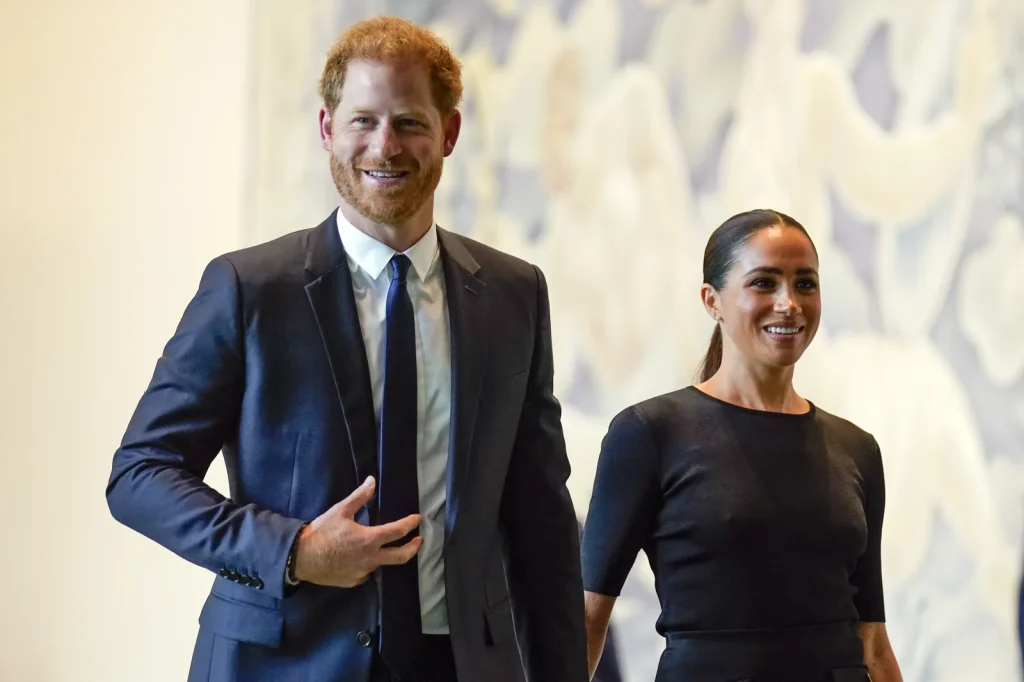
Seth Wenig/AP
2016 – A Royal Blind Date: Prince Harry (grandson of Queen Elizabeth II and then a popular 31-year-old prince known for his adventurous streak) meets Meghan Markle (an American actress from Los Angeles, then 34 and starring in the TV legal drama Suits) in July 2016. The introduction was arranged by a mutual friend in London. Their chemistry was instant. Just weeks later, Harry whisked Meghan away to Botswana for a romantic camping trip under African skies– a fitting start for a love story that would break the mold. By the fall, tabloids had gotten wind of the romance. In November 2016, Harry took the extraordinary step of confirming his new girlfriend via a statement from Kensington Palace, slamming the “abuse and harassment” Meghan was facing and the “racial undertones” of media coverage. It was a chivalrous move that signaled how serious he was about Meghan and set the tone for the couple’s fraught relationship with the press.
2017 – Love in the Spotlight: The pair’s bond deepened in 2017, with Meghan quietly shutting down her lifestyle blog and adjusting to royal dating life. In September, Meghan spoke publicly for the first time about Harry, gushing “We’re in love” in a Vanity Fair interview. Later that month, they made their public debut as a couple at the Invictus Games in Toronto (a sports event for veterans founded by Harry). They were photographed holding hands and beaming, with Meghan based in Toronto at the time for work – a Canadian home turf that offered the couple a brief respite from the intense U.K. glare. By fall’s end, royal watchers were on high alert, and on November 27, 2017, Clarence House announced the big news: Harry and Meghan were engaged. Harry had designed a custom ring featuring diamonds from Diana’s collection and proposed during a cozy night in over roast chicken. The world got its first official look at the couple during a photocall at Kensington Palace’s Sunken Garden, where Meghan – in a white coat – proudly showed off the ring as Harry grinned by her side. The transatlantic romance had officially entered royal history.
2018 – A Royal Wedding like No Other: The prince harry and meghan news in 2018 was dominated by wedding preparations. Meghan, breaking the mold as a biracial, divorced, American actress, was set to become a British royal – a fact celebrated by many as a sign of a modernizing monarchy. The couple wed on May 19, 2018, in a breathtaking ceremony at St. George’s Chapel, Windsor Castle. An estimated 1.9 billion people tuned in worldwide as Meghan walked down the aisle in a sleek Givenchy gown, accompanied partway by Prince Charles (after her own father, Thomas Markle, pulled out days before due to health and controversy over staged paparazzi photos). The wedding blended British pageantry with personal touches: a gospel choir sang “Stand By Me” and an American bishop delivered an impassioned sermon on love. Upon marriage, the Queen bestowed Harry and Meghan the titles of Duke and Duchess of Sussex. The newlyweds rode through Windsor in a horse-drawn carriage, greeted by adoring crowds waving Union Jacks and even Canadian flags (a nod to Meghan’s ties up north). It was a storybook moment, though behind palace doors, storm clouds were already gathering. Later that year, Harry and Meghan announced they were expecting their first child while on tour in Australia in October – joyous news that unfortunately got mired by tabloid whispers of a rift between Meghan and her new in-laws. (Reports would later surface of a disagreement between Meghan and Kate over bridesmaid dresses; Meghan told Oprah that “the reverse happened” – it was Kate who made her cry, but apologized with flowers.)
2019 – Joy and Tension: In May 2019, Meghan and Harry welcomed their son, Archie Harrison Mountbatten-Windsor. Archie’s birth at London’s Portland Hospital on May 6 brought jubilation and a dose of youthful energy to the royal family. Two days later, the proud parents presented their “bundle of joy” to the world at Windsor Castle, with Meghan declaring “he has the sweetest temperament” as Harry cradled the blanketed newborn. However, even this happy moment had its frictions. The couple had opted for a private birth and a select press photo call, which drew some grumbling from parts of the media long accustomed to more access. Archie’s christening that summer was similarly intimate and press-restricted, fueling tabloid critiques. Meanwhile, Meghan and Harry news increasingly focused on palace intrigue: in March 2019, the Sussexes formally split from William and Kate’s household, establishing their own offices and moving out of Kensington Palace to Frogmore Cottage. Media reports hinted at a growing rift between the once inseparable princes. By autumn, Harry publicly acknowledged tensions with William, telling an interviewer, “We’re certainly on different paths at the moment” – a rare royal admission of strain. The new parents also took on the British tabloids: in October 2019, Meghan sued the Mail on Sunday for publishing a private letter to her estranged father, and Harry separately launched lawsuits against several papers over alleged phone-hacking. In a searing statement, Harry accused the tabloids of tormenting Meghan and drew parallels to the treatment of his mother, Princess Diana, saying he feared “history repeating itself.” This was the clearest sign yet that Harry was ready to break longstanding royal protocols to protect his wife and family.
2020 – The Great Escape: Early 2020 marked a watershed. On January 8, the Sussexes stunned the world by announcing on Instagram their plan to “step back as ‘senior’ members of the Royal Family”. The bombshell statement – reportedly issued without prior approval from the Queen – outlined that Harry and Meghan wanted to split their time between the UK and North America (with Canada, a Commonwealth country where Meghan had lived for years, as a likely second home) and become financially independent. The Queen summoned Harry, Charles, and William to an emergency summit at Sandringham to hash out the details. After intense talks, Buckingham Palace confirmed an agreement: Harry and Meghan would indeed cease royal duties, no longer use their HRH titles, and would repay taxpayer funds used to renovate Frogmore Cottage. In effect, Megxit was finalized. The couple’s last royal engagement came in March at the Commonwealth Day service in Westminster Abbey – where keen-eyed observers noted frosty glances between the Sussexes and Cambridges. Days later, Harry and Meghan quietly departed the UK, initially retreating to Vancouver Island in Canada. (In a poignant scene, Meghan was spotted visiting a Canadian women’s shelter as paparazzi camped outside in the snow.) By late March 2020, with the pandemic looming, they had settled in Los Angeles, where media mogul Tyler Perry lent them his fortified mansion for safety. The Queen gave her reluctant blessing to the new arrangement, and in a personal statement, expressed that the couple and Archie “will always be much-loved family members”. Thus began an unprecedented new chapter: Harry and Meghan were free from royal rules, but cut off from royal funds and security – a drastic trade-off.
2021 – New Beginnings and Bombshells: The Sussexes kicked off 2021 by cementing their new independent brand. They launched Archewell Inc. – encompassing a non-profit foundation and media production arms – and inked more deals, all while Meghan was pregnant with their second child. In February, it was confirmed they would not return as working royals, and honorary patronages (including Harry’s beloved Royal Marines post) were stripped away. Unshackled, the couple gave their explosive Oprah Winfrey interview in March (detailed in the Breaking News section above), which became one of the defining moments of their timeline. The interview aired just as Meghan and Harry revealed the happy news that their second baby would be a girl. The fallout from the interview was global, putting conversations about racism in the monarchy and mental health front and center. The royal family publicly – and tersely – responded, and for a while the rift appeared deeper than ever. In June, their daughter Lilibet Diana Mountbatten-Windsor was born in Santa Barbara, completing their family. They honored the Queen by using her personal nickname “Lilibet,” a choice that generated its own small controversy about whether they had sought Her Majesty’s permission. (The Palace and Sussexes offered conflicting takes to the press on that matter.) By year’s end, Harry and Meghan were firmly ensconced in California, making only carefully managed appearances – such as a September trip to New York City for a charity concert – and quietly working on forthcoming content for Netflix and Spotify. Yet family ties continued to fray: Harry’s relationships with his father and brother remained largely ice-cold (aside from a brief reunion when Harry returned for Prince Philip’s funeral). Still, amid the drama, 2021 proved that Harry and Meghan could thrive outside the royal cocoon, becoming power players in their own right.
2022 – Across the Pond: The year 2022 further established the Sussexes as independent global figures – and occasional royal guests. In April, Harry attended his grandfather’s memorial service in London solo, then met the Queen privately with Meghan on their way to the Invictus Games in the Netherlands. June saw the couple’s much-anticipated return to Britain together for the Queen’s Platinum Jubilee. It was their first joint public event with the royal family since 2020. They kept to the sidelines, appearing only at a Thanksgiving service (where they notably sat apart from William and Kate). The brief visit included a private introduction of baby Lilibet to her great-grandmother, the Queen, on the little girl’s first birthday – a moment of personal joy amid formal festivities. Back in the US, Meghan gave an August interview to The Cut magazine hinting at “lost” father-daughter dynamics and saying that just by “existing” she and Harry were “upsetting the dynamic of the hierarchy.” It was seen as a veiled swipe at the royals and showed tensions were still high. In September 2022, duty called unexpectedly: Queen Elizabeth II passed away. Harry and Meghan happened to be on a European trip and rushed to Britain. In a scene that surprised the public, Harry joined William, along with Meghan and Kate, for a joint walkabout outside Windsor – the estranged brothers, with their wives, greeting mourners side by side. It was a poignant, if temporary, show of unity. Harry remained in the UK through the state funeral, where he somberly marched in procession behind the Queen’s coffin. After bidding farewell to his beloved grandmother, Harry returned to California. Just weeks later, in December, the couple’s Netflix documentary premiered, allowing them to narrate their story in their own words (as described earlier). By the end of 2022, the Sussexes had fully transitioned from royal life to celebrity life, all while trying to maintain their unique mix of royalty, philanthropy, and Hollywood-style storytelling.
2023 – Fallout and Futures: In 2023, the consequences of the couple’s candidness crystallized. Harry’s memoir Spare came out in January, smashing sales records but also eroding what remained of his personal privacy as he laid bare intimate details and grievances. Family relations hit a nadir – with no public contact between the Sussexes and the Windsors except the minimum required at Charles’s May coronation. Harry’s solo appearance at the coronation (Meghan stayed home) was fleeting; he jetted in and out, and there were no signs of a thaw with William. Back in California, the Sussexes continued their business pursuits – but not without setbacks, as illustrated by the end of their Spotify deal in June. Summer 2023 saw whispers of Meghan relaunching herself in Hollywood (she signed with a top talent agency WME, hinting at new projects). Harry, meanwhile, pressed on with his mission to hold the British tabloids accountable: he became the first senior royal in over a century to testify in court when he took the stand in a phone-hacking lawsuit in London. In a London courtroom, Harry passionately accused the press of destroying his adolescence and sowing paranoia – a dramatic coda to his royal journey. As of early 2024, Harry and Meghan are raising Archie and Lili in Montecito, occasionally spotted on low-key outings in their community or at celebrity gatherings. They are reportedly working on solo projects – Meghan’s advocacy and lifestyle content, Harry’s upcoming Invictus documentary and charity work – while also spending family time in the sunshine of coastal California. From a blind date to two beautiful children and a transcontinental life, the Harry-Meghan love story has been anything but conventional. Yet through it all, the Duke and Duchess of Sussex remain each other’s steadfast partners, writing their own script day by day.
(Timeline Key Milestones: 2016 – first meeting; 2017 – engagement; 2018 – royal wedding; 2019 – baby Archie; 2020 – exit from royal duties; 2021 – Oprah interview & baby Lili; 2022 – Queen’s death & Netflix doc; 2023 – Spare & post-royal life.)
Behind Palace Doors: Royal Feuds and Family Tensions
From fairy-tale wedding to “family firm” feuds, Harry and Meghan’s journey has been rife with behind-the-scenes intrigue worthy of a soap opera. The pressures of royalty and an unforgiving media magnified personal slights into front-page scandals. As a polished tabloid might quip, “all was not well in the House of Windsor.” Here, we unpack some of the most dramatic conflicts – complete with jaw-dropping quotes and royal showdowns that have fueled Prince Harry and Meghan news cycles.
Harry vs. The Heir – Brothers at Odds: Once inseparable princes who bonded over the loss of their mother, William and Harry saw their relationship fray as Harry’s romance with Meghan grew serious. By 2018, rumors swirled that William had cautioned Harry about moving too fast with Meghan, which Harry reportedly resented. Tensions escalated after the Sussexes broke away from the joint royal household in 2019. In public, both men tried to project unity, but Harry admitted in a candid October 2019 interview that he and William were on “different paths” and had “good days and bad days”. The full extent of the rift emerged later: in his 2023 memoir Spare, Harry revealed an ugly altercation in which William allegedly attacked him during a 2019 argument. “He grabbed me by the collar, ripping my necklace, and he knocked me to the floor,” Harry writes, describing how he landed on a dog’s bowl, the pieces cutting into his back. William, enraged over something to do with Meghan, later apologized, according to Harry, but the damage was done. The once close brothers barely spoke for months. The world saw that frostiness on display at joint events – from avoiding eye contact at a 2020 Commonwealth service to standing far apart at Philip’s funeral in 2021. Even at the Queen’s funeral in 2022, royal watchers noted the princes marched together but did not interact directly. As Harry memorably summarized in the Netflix docuseries, “The saddest part was this wedge created between myself and my brother…he is now on the institution’s side”. It’s a Shakespearean family drama: two princes, divided by duty, loyalty and the women they married, playing out under the harsh glare of the media.

Duchesses in Discord – Meghan and Kate: The glossy images of Meghan and the then-Kate Middleton laughing together at Wimbledon in 2018 belied a more complicated relationship. In the early days, Kate, as a fellow newcomer to the royal family (though with a decade of experience at that point), was expected to mentor Meghan. But tabloid stories soon painted them as rivals. The most infamous tale claimed Meghan made Kate cry during a bridesmaid dress fitting before the wedding – a story that went unchecked by the palace and helped feed the “Duchess Difficult” narrative about Meghan. Years later, Meghan set the record straight in the Oprah interview: “The reverse happened.” It was Kate who made Meghan cry, Meghan said, over a disagreement about flower girl dresses, “and it really hurt my feelings.” Kate later apologized and brought flowers, and Meghan forgave her. Meghan refrained from attacking her sister-in-law, calling Kate a “good person”, but the incident was a turning point. It highlighted how Meghan felt unprotected by the palace – the Firm had allowed the press to villainize her over a false story rather than correct it. In Spare, Harry added context, alleging that during a reconciliation attempt, Kate admitted she was hormonal and pregnant during the dress spat and Meghan retorted that she too had baby brain – a comment that incensed William, who pointed at Meghan and said “Well, it’s rude, Meghan” and then told her “These things are not done here” (according to leaked excerpts). The culture clash between an American actress and a British future queen was laid bare. While there was never open warfare between Kate and Meghan in public, behind closed doors there were tears, tense texts, and awkward tea-time chats to smooth things over. Ultimately, the “dueling duchesses” narrative became a tabloid staple – often reportedly stoked by palace aides leaking tidbits – and symbolized the larger issues of Meghan’s fit within the royal fold. Both women have kept a dignified silence on their private interactions, but the media’s pitting of them against each other left a lingering sting. As Meghan poignantly told Oprah, “If you love me, you don’t have to hate her. And if you love her, you don’t need to hate me.” It was a plea for the press and public to stop framing everything as a zero-sum duel between the two duchesses.
Showdown with The Firm – “The Institution” vs. the Sussexes: Perhaps the most complex conflict was not between individuals but between Harry and Meghan and the monarchy as an institution – “The Firm” as Prince Philip nicknamed it. From the Sussex point of view, palace machinery failed them at key moments. Meghan said she was “silenced” by royal minders, forbidden from speaking out to correct falsehoods. She recounted to Oprah that when the tabloid onslaught got unbearable and she begged for mental health support, palace officials balked: “They said… there’s nothing we can do to protect you because you’re not a paid employee of the institution”. To Meghan, it felt like the institution (the royal bureaucracy) valued optics over her well-being. Harry echoed this, revealing that he felt trapped by expectations and frustrated that the palace would not stand up to toxic press coverage of his wife. “They weren’t willing to tell the truth to protect me and my husband,” Meghan said of royal higher-ups, even as unflattering stories (some later proven false) ran unchecked. On the flip side, courtiers and some family members felt Harry and Meghan were trying to have it both ways – enjoying royal privileges while flouting the unwritten rules of discretion. One former aide groused anonymously that after all the accommodations for Meghan, they felt “totally betrayed… made to look like racists” by the couple’s claims. By early 2020, trust had eroded on both sides. Negotiations over the Sussexes’ exit were tense; Harry writes that at one point Charles stopped taking his calls. Even after they left, palace aides launched an investigation into allegations (strongly denied by Meghan) that she had bullied staff. The findings of that probe were kept secret, but the palace tersely stated “lessons [were] learned”. In turn, Meghan felt targeted by a smear campaign. The couple’s relations with “The Firm” became so strained that Harry told Oprah his father Charles at one point “stopped taking my calls” during the exit talks and that the palace had cut them off financially and removed their security protection, heightening their vulnerability. It was an ugly divorce between prince and institution.
Harry and Charles – Father and Son Fallout: While Harry’s bond with the Queen remained warm to the end, his relationship with his father Charles suffered serious damage. Harry has spoken fondly of Charles in the past – how Charles walked Meghan down the aisle when her own father couldn’t, for example, and how he has a soft spot for his “Pa.” But Spare and other interviews revealed deep wounds. Harry felt Charles prioritized the Crown over fatherhood. In Spare, Harry recounts that at Prince Philip’s funeral, as he and William argued with raised voices, Charles pleaded with them: “Please, boys. Don’t make my final years a misery.” This plaintive request from the new King – “don’t make my final years a misery” – hints at how agonizing the family conflict was for Charles. Yet Harry’s view is that his misery went unheeded for years. He was hurt that Charles did not defend Meghan more firmly against racist coverage. In their Oprah chat, Harry revealed that Charles had “stopped taking my calls” at one point and that he felt “let down” by his father. The ultimate cut came when Charles, upon becoming King, asked the Sussexes to vacate Frogmore Cottage in early 2023 – essentially evicting his son from his last foothold in the UK. Friends of Charles say he loves Harry deeply and that the door is always open for reconciliation. Indeed, Charles made a point in his maiden speech as King to send “love for Harry and Meghan as they continue to build their lives overseas”, indicating he hasn’t given up. But as a father, Charles has struggled to bridge the divide. Tabloids have claimed that private conversations between Harry and Charles (and William) after Prince Philip’s funeral and again during the Jubilee were “unproductive.” Harry’s choice to publish a memoir without giving his family a heads-up particularly stung Charles, insiders say. Amid all this, Charles did invite Harry (and Meghan) to his coronation. Harry came alone, and he reportedly toasted his father privately at the post-coronation lunch before dashing to the airport. The world is left to wonder if this father and son can ever fully mend their relationship – or if the scars of the past few years will endure.
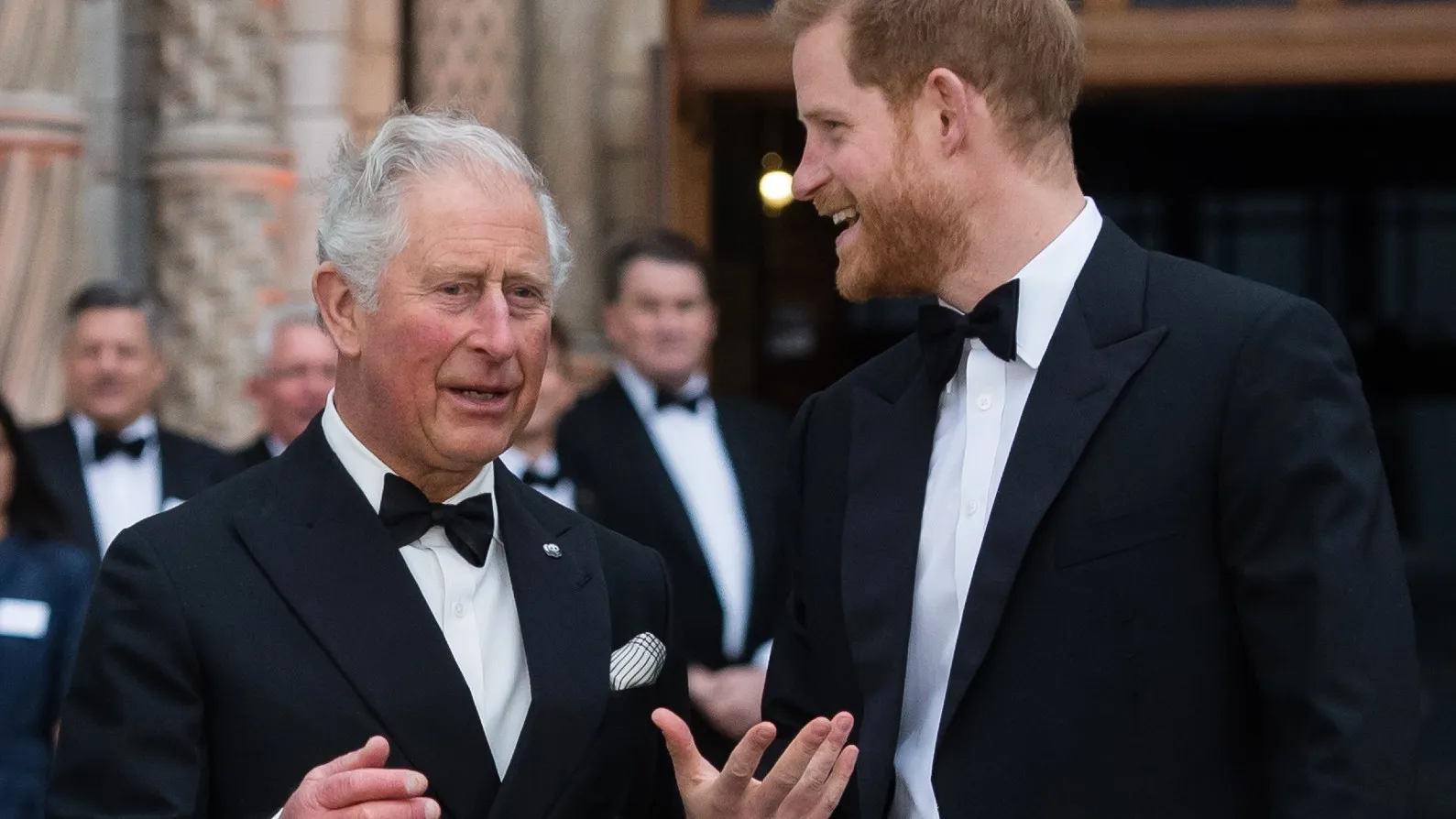
Warring with the Media – “The Invisible Contract”: No account of the Sussexes’ conflicts is complete without highlighting their battle with the British media. In Harry’s eyes, the press – especially the tabloid paparazzi and gossip pages – is the ultimate villain of this story. The prince has never forgotten how paparazzi chasing Diana contributed to her death, and he saw frightening parallels in Meghan’s treatment. “I was born into this life, and it is my duty to expose the exploitation and bribery that happens within our media,” Harry said in a 2019 statement launching legal action. Both Harry and Meghan have repeatedly called out what they see as an incestuous, toxic relationship between the royal institution and the tabloids. Harry described it as “a dirty game” of trading information for favorable coverage. The couple allege that negative stories about them were sometimes planted or allowed to run to protect other royal family members – essentially, that they were scapegoated to take media heat off others. This claim of a tacit quid pro quo – often dubbed “the invisible contract” between the palace and press – is denied by royal aides, but the Sussexes fervently believe it. Meghan, in particular, was incensed by what she felt were racist and misogynistic undertones in her media portrayal (headlines dubbing her “Duchess Difficult,” likening her to Yoko Ono for “stealing” Harry away, or worse). The couple’s frustration hit a boiling point when Meghan’s private letter to her father was splashed across Mail on Sunday pages; that spurred the lawsuit she eventually won. Harry has at least six ongoing legal cases against British newspapers over issues ranging from hacking to libel. In June 2023, he made history by testifying in the High Court, recounting how stories planted by tabloids drove wedges in his family and harmed his mental health. He even directly accused the royal institution of withholding information from him about press intrusions for years, to avoid triggering a confrontation that would “open a can of worms.” For their part, some tabloids and commentators accuse Harry and Meghan of hypocrisy – courting the media (through Oprah, Netflix, etc.) while bashing it. This feud with the press is deeply personal for Harry. In one emotional revelation, he said the relentless harassment and racism Meghan faced were a big reason he “feared history repeating itself” and decided to step away from royal life. In the end, the Sussexes’ war with the media is ongoing and relentless. It’s also a central theme of their story: their desire to control their narrative versus the press’s hunger for insider access. As Harry ominously noted, “There’s leaking, but there’s also planting of stories… and if the comms team want to remove a negative story about their principal, they’ll trade and give you something about someone else”. Such claims have rattled the monarchy and put British tabloid practices under a microscope like never before.
Through all these feuds and showdowns, Harry and Meghan have, in a sense, become protagonists in a real-life royal melodrama. The dramatic quotes say it all: from Harry’s “He knocked me to the floor” to Charles’s “Don’t make my final years a misery”, from Meghan’s “I was silenced” to the Queen’s “recollections may vary,” the Sussex story has been overflowing with headline-ready moments. It’s no wonder a polished tabloid journalist delights in covering this saga – it has love and betrayal, glamour and tragedy, insiders and outsiders. And unlike any royal ruptures before, Harry and Meghan haven’t hid their side of the story; they’ve broadcast it in books, interviews, and documentaries, ensuring their perspective is heard loud and clear. In true tabloid fashion, one might say: stay tuned, because with the Sussexes, the royal drama is never done.
The Sussex Impact: Monarchy, Media, and Global Culture
Harry and Meghan’s departure from royal life didn’t just make for sensational headlines – it sent shockwaves through the British monarchy and sparked conversations across the globe. In the UK, their choices forced an ancient institution to confront modern issues, while abroad – from Canada to California – people debated the evolving role of royalty. Here we analyze how the Sussex saga has affected the monarchy, British culture, and celebrity culture worldwide, through a lens that remains fond of the Crown’s traditions even as it acknowledges the need for change.
A Jolt to the Monarchy: When Harry – a beloved prince often seen as Diana’s rebellious heir – chose love and personal freedom over duty, it challenged the notion that the Crown always comes first. The monarchy, often described as an immovable institution, suddenly had to adapt on the fly. The Queen handled the initial exit with calm firmness, negotiating a clean break in a matter of days, but the mere fact of a high-ranking royal stepping away was nearly unprecedented. Royal commentators noted that the Sussex saga was the House of Windsor’s most disruptive crisis since the abdication of Edward VIII in 1936. In some ways, the monarchy emerged resilient: Queen Elizabeth’s steady hand and the seamless transition to King Charles III demonstrated that The Firm can weather storms. Public support for the monarchy in Britain remained solid overall, though generational differences grew starker. Many older Britons saw Harry and Meghan’s critiques as hurtful to the Queen and destabilizing; younger Britons and people of color often sympathized with the Sussexes, saying the couple exposed the monarchy’s blind spots regarding race and mental health. Indeed, the Palace did respond to the accusations. After the Oprah interview, it announced it would privately address the racism allegations and reportedly appointed a diversity officer to modernize court practices. Even William, in a rare unscripted retort, insisted “we’re not a racist family”, an indicator that the royals felt compelled to defend their honor in the face of public questioning. In the long term, Harry and Meghan’s exit may have even streamlined “The Firm.” Charles has been pursuing a “slimmed-down monarchy,” focusing on direct heirs. By default, the Sussexes’ departure accelerated that plan – the royal roster is now tight: King Charles, Queen Camilla, William and Kate, and a handful of others carry the mantle, while non-working royals (like Harry, Prince Andrew, etc.) are not in the public forefront. Still, the monarchy lost something intangible – a bit of its youthful star power and a bridge to more diverse communities that Meghan in particular represented. The image of a glamorous, biracial American duchess in the royal family had been hailed as a sign of progress. Her acrimonious split from “The Firm” left that promise unfulfilled. Affection for the monarchy remains, especially with the continuity provided by William, Kate, and their children, but Harry and Meghan’s ordeal has undeniably prompted the royals to be more introspective. Even the late Queen, in her carefully worded statement post-Oprah, acknowledged that the issues raised – particularly race – were “concerning” and would be taken seriously. It was an implicit admission that the monarchy, often perceived as infallible, is not immune to the need for change.
British Culture and Public Perception: In Britain, the Sussex saga became a cultural Rorschach test. It sparked debates about class, race, and the role of a free press. For some Britons, Harry and Meghan’s tell-alls violated the stiff-upper-lip ethos of the royal family. Criticism was sharp: they were accused of airing dirty laundry for money and fame, or of lacking the stoicism expected of royals. Traditionalists felt the couple disrespected the Queen, especially with the timing of the Oprah interview while Prince Philip was gravely ill. Tabloid newspapers (like the Daily Mail and The Sun) often reflected this sentiment with scathing coverage, branding the couple ungrateful or labeling their endeavors “cash-grabs.” On the flip side, a significant segment of the British public, especially younger and more progressive voices, applauded Harry and Meghan for breaking free and speaking out. Their openness about mental health had a noticeable impact – Meghan’s admission of suicidal thoughts and Harry’s candor about needing therapy contributed to a national conversation that has increasingly destigmatized mental health struggles, even within stiff aristocratic circles. Their accusations of racism also struck a chord in a UK still grappling with its colonial legacy and issues of inclusion. In 2020, the summer before the Oprah interview, Britain had seen Black Lives Matter protests; now here was a duchess claiming that even the royal family was not immune to systemic bias. It forced many Britons to confront uncomfortable questions. Polls in the wake of the Oprah broadcast showed a racial divide in perceptions: a majority of Black Britons believed Meghan was treated unfairly by the royal establishment, whereas a majority of white Britons were more inclined to think the couple had been treated fairly. The saga also highlighted the Commonwealth dimension – with commentators in countries like Canada, Australia, and the Caribbean taking keen interest. In Canada (where Meghan had lived for 7 years and where the couple initially took refuge), there was a noticeable uptick in republican sentiment following the Oprah revelations. The idea that the Crown might harbor racism did not sit well in a multicultural country. While Canada remains a constitutional monarchy, discussions about the relevance of the Crown gained a bit more traction, with some citing the Sussexes’ experience as evidence of an old institution out of step with modern values. Similarly, in Australia and other realms, Harry and Meghan’s story fed into ongoing debates about the monarchy’s future role. Within the UK, the couple’s exit also prompted media introspection. The aggressive tactics of the tabloids were called out by certain MPs and public figures. There was sympathy when Meghan successfully sued The Mail – a sense that perhaps the gutter press had gone too far. At the same time, die-hard royalists doubled down on their view that the media scrutiny comes with the royal territory: “If you want the glamour and platform, you have to take the criticism too,” was a common refrain on talk radio. Culturally, Harry and Meghan became polarizing figures in Britain: adored by some, abhorred by others. Even at the Queen’s Jubilee, cheers from supporters mingled with boos from detractors when the Sussexes were spotted. Their very name became a shorthand in culture-war debates – to be “pro-Sussex” or “anti-Sussex” said something about one’s views on tradition, diversity, and media trust. Yet, despite all this, the British affection for the monarchy itself – as an institution – has remained fairly steady. The Sussex saga may have tarnished certain individuals, but many Britons compartmentalized that from their respect for the Queen or now the King. The platinum jubilee and then the national outpouring of grief at Elizabeth II’s funeral demonstrated that the monarchy’s mystique endures. If anything, Harry and Meghan’s absence from the royal lineup has, in some circles, reinforced support for those “loyal” royals who carry on without public complaint.
Global Celebrity Culture – A Royal Hollywood Remix: Harry and Meghan’s post-Megxit life has been a fascinating experiment at the intersection of royalty and celebrity. In leaving the UK, they effectively swapped the palace for Hollywood – and in doing so, highlighted differences in cultural attitudes. In the United States and Canada, the couple generally received a warmer glow of publicity. American media, in particular, often frame Harry and Meghan as a cause célèbre – figures who stood up against an antiquated system. Meghan has been likened to a Disney princess who fled the castle to find her own voice. The couple quickly ingratiated themselves with America’s A-list: neighbors with Oprah Winfrey and Ellen DeGeneres, spotted at dinner with Gwyneth Paltrow, advocacy friendships with the likes of Serena Williams and Beyoncé (who gave Meghan an encouraging nod after the Oprah interview). They have leveraged their royal titles to command projects that any Hollywood producer would envy – a $100+ million Netflix deal, for example – effectively monetizing their global fame. This has led to accusations back in Britain that they “want the glamour without the responsibility,” but in the U.S., it’s largely seen as savvy brand-building. The transatlantic contrast was stark when, in December 2022, Harry and Meghan received the Robert F. Kennedy Human Rights Award for speaking out against “structural racism” in the monarchy. While British tabloids sneered, Americans at the gala applauded the Sussexes for using their platform for social justice.
Their integration into celebrity culture hasn’t been completely smooth, however. The entertainment industry can be fickle. After an initial flurry of A-list attention, some Hollywood insiders reportedly grew more cautious, especially following the Spotify deal fizzling and the sometimes mixed critical reception to their Netflix content. There’s a sense that the Sussexes are figuring out how to shift from being subjects of fascination to producers of compelling content. Meghan’s foray into podcasting showed promise – Archetypes did win awards – but the fact that Spotify “mutually agreed to part ways” with Archewell Audio indicated that simply having a famous name isn’t enough to sustain audience engagement long-term. In a culture that churns through news cycles quickly, Harry and Meghan will need to continually reinvent themselves to stay relevant beyond their royal drama. That said, their A-list cachet remains strong: any time they appear at an event (be it a charity polo match or a Hollywood awards show), cameras flash furiously. They’ve arguably created a new hybrid category of celebrity – call it “royal reality stars” – with a level of public intrigue akin to Diana in the ’80s or the Obamas post-White House. People want to know intimate details (hence the massive readership for Spare), yet Harry and Meghan also command respect for the causes they champion, such as girls’ education, vaccine equity, mental health initiatives, and veteran welfare.
From a global cultural standpoint, the Sussex story has been empowering to many. They symbolized breaking free from tradition for love and mental well-being. Memes and TikToks lauded Meghan as a feminist icon who “said no to the Crown” to protect her family. In particular, women of color around the world saw reflections of their own struggles in Meghan’s challenges – dealing with microaggressions, being expected to assimilate into an institution not built for them, etc. On the other hand, critics argue the Sussexes exemplify a culture of oversharing and victimhood among the ultra-privileged. The term “Sussex fatigue” even cropped up after their Netflix series and Spare came out in quick succession, with some saying the couple should perhaps retreat from the public eye for a bit if they truly desire privacy.
Affection for the Monarchy – A Balancing Act: Despite everything, this analysis wouldn’t be complete without noting that a deep affection for the monarchy persists, even from Harry and Meghan themselves. Harry has repeatedly said he loves his family and respects the institution; his grievances, he insists, were about seeking accountability and safety, not destroying the monarchy. He has expressed a willingness to reconcile if possible. Meghan, in the Oprah interview, curtsied and praised the Queen, saying Her Majesty had always been wonderful to her. The couple named their daughter Lilibet in tribute to the Queen – hardly the act of avowed anti-monarchists. And indeed, during the solemn mourning for Elizabeth II, Harry and Meghan participated respectfully, with Harry reportedly texting his father supportive messages and Meghan shedding tears at the funeral. For all their criticism of “the institution,” they have maintained an affectionate tone toward the Queen and now King Charles. This duality reflects many people’s feelings: one can love the ideals of the Crown and the individuals in the family, while still acknowledging its need to evolve.
In the UK, many commentators – even those critical of the Sussexes – express hope that eventually bridges will be built. There’s precedent: historical royal feuds (like Edward VII and his mother Queen Victoria, or Prince Andrew’s excommunication) often soften with time or generational change. As the tabloids continue to churn, the palace has largely reverted to its time-tested “never complain, never explain” approach for now. King Charles has kept communication lines open and, as noted, made public mention of his “love” for Harry and Meghan. Prince William, whose betrayal Harry described in excruciating detail, has not responded in kind – likely to preserve the monarchy’s dignity. But insiders say William feels great sorrow over the estrangement and that he misses the brother who was once his closest ally. Some royal experts speculate that down the road, perhaps after the dust of memoirs and media deals settles, the brothers could find a way back to a cordial relationship, if not the old camaraderie.
Meanwhile, within the Commonwealth, Harry and Meghan’s experience has in some cases accelerated conversations about the monarchy’s relevance. Caribbean nations like Barbados have already become republics (though that was in motion before the Oprah interview), and others like Jamaica have openly discussed following suit, citing a desire to fully leave the colonial past behind. The Sussexes didn’t cause these movements, but their story – particularly Meghan’s – underscored to some in those countries that the monarchy might not have fully shed its historic blind spots. Conversely, others in the Commonwealth felt sympathy for the Queen having to deal with family drama so late in life, reinforcing their loyalty to her and now to Charles.
In summary, the “Harry and Meghan effect” on the world has been complex. They have undeniably nudged the royal family to modernize somewhat, especially regarding how it handles issues of race, mental health, and the press. They’ve emboldened a younger generation to expect transparency and humanity from their public figures – even ones as tradition-bound as the Windsors. In British society, they ignited debates on entrenched social attitudes, and in media circles, they became a case study in both the power and peril of the tabloid press. Globally, they’ve blurred the lines between royalty and celebrity, possibly carving a path for future royals who may not be in direct line to the throne to find roles outside the Firm.
And through it all, the monarchy endures – adapting, slowly, but rooted in a thousand years of continuity. The House of Windsor has faced abdications, divorces, and tragedies; a “Mexit” (as some Canadians cheekily called it when the Sussexes spent time in Canada) was just another chapter. The institution likely benefits from the affection people hold for figures like Queen Elizabeth II and now the promise of William and Kate, rather than any one member. Even Harry acknowledges that if not for his place in the line of succession (now a distant fifth), his exit might not have caused such an uproar. The Crown as an ideal – symbolizing stability and service – remains solid in many hearts, even as particular royals come and go.
In a polished tabloid tone, one might frame it this way: the latest Harry and Meghan news proves the age-old adage that there is no such thing as bad publicity. The royal family, rocked by scandal, ultimately carries on, perhaps a bit bruised but still glittering. Harry and Meghan, cast out (or self-exiled) from the palace, have achieved global fame and influence beyond what any minor royal could dream. In a sense, everyone has gotten what they wanted: the monarchy is freer of disruptive outliers, and Harry and Meghan are free of the monarchy’s constraints. The world, meanwhile, got one of the juiciest royal soap operas in decades – and some meaningful discussions about empathy and equality to boot.
As this saga continues to unfold – with regular updates in this very article – one thing is clear: Harry and Meghan have indelibly left their mark on the Royal Family and on society. Love them or loathe them, the Duke and Duchess of Sussex have proven to be agents of change, and their story is a compelling chapter in the ongoing narrative of the British monarchy. In the grand tradition of tabloid storytelling, the Sussexes have given us drama, emotion, and a peek behind palace gates. And we simply can’t look away.

